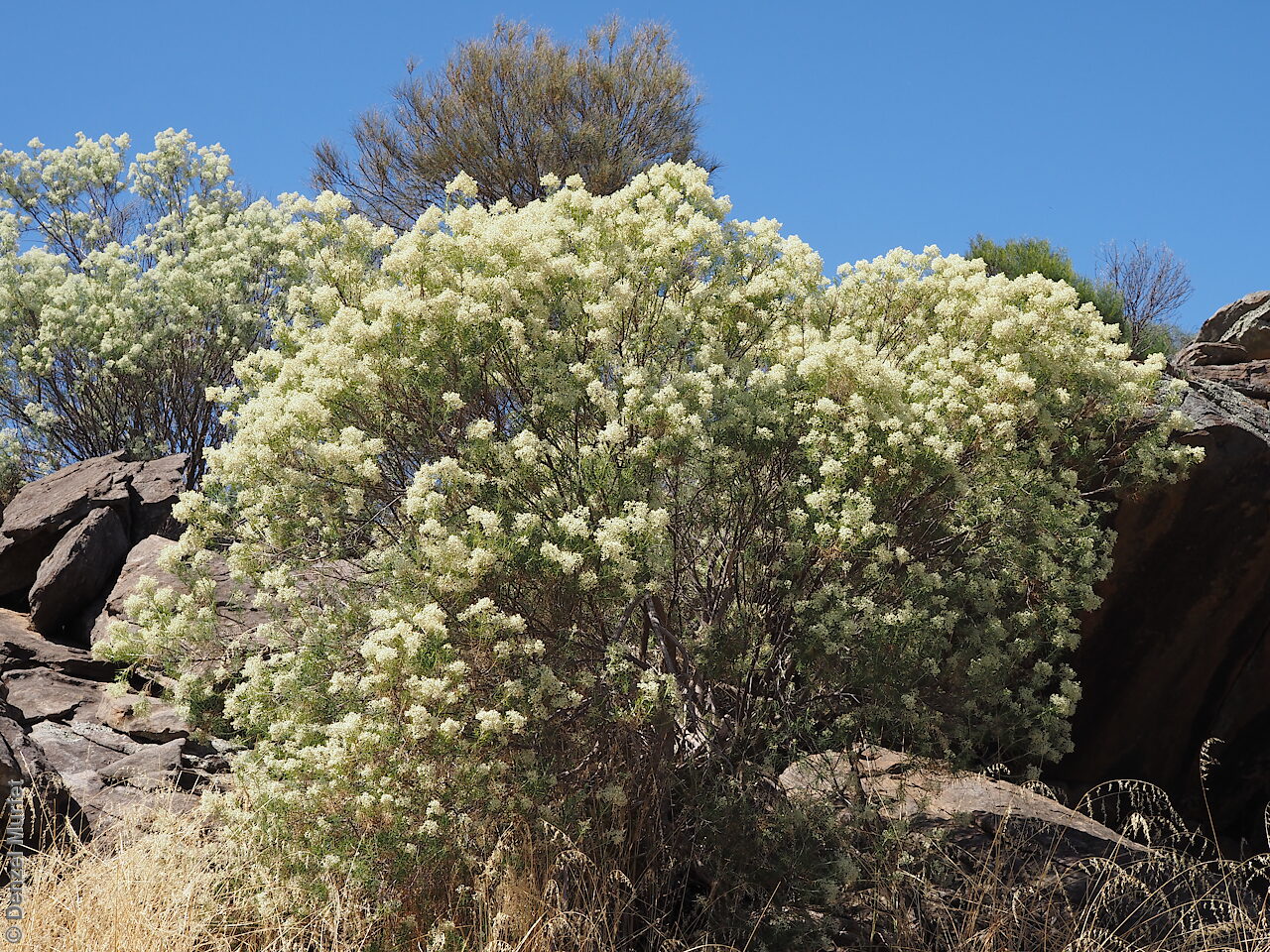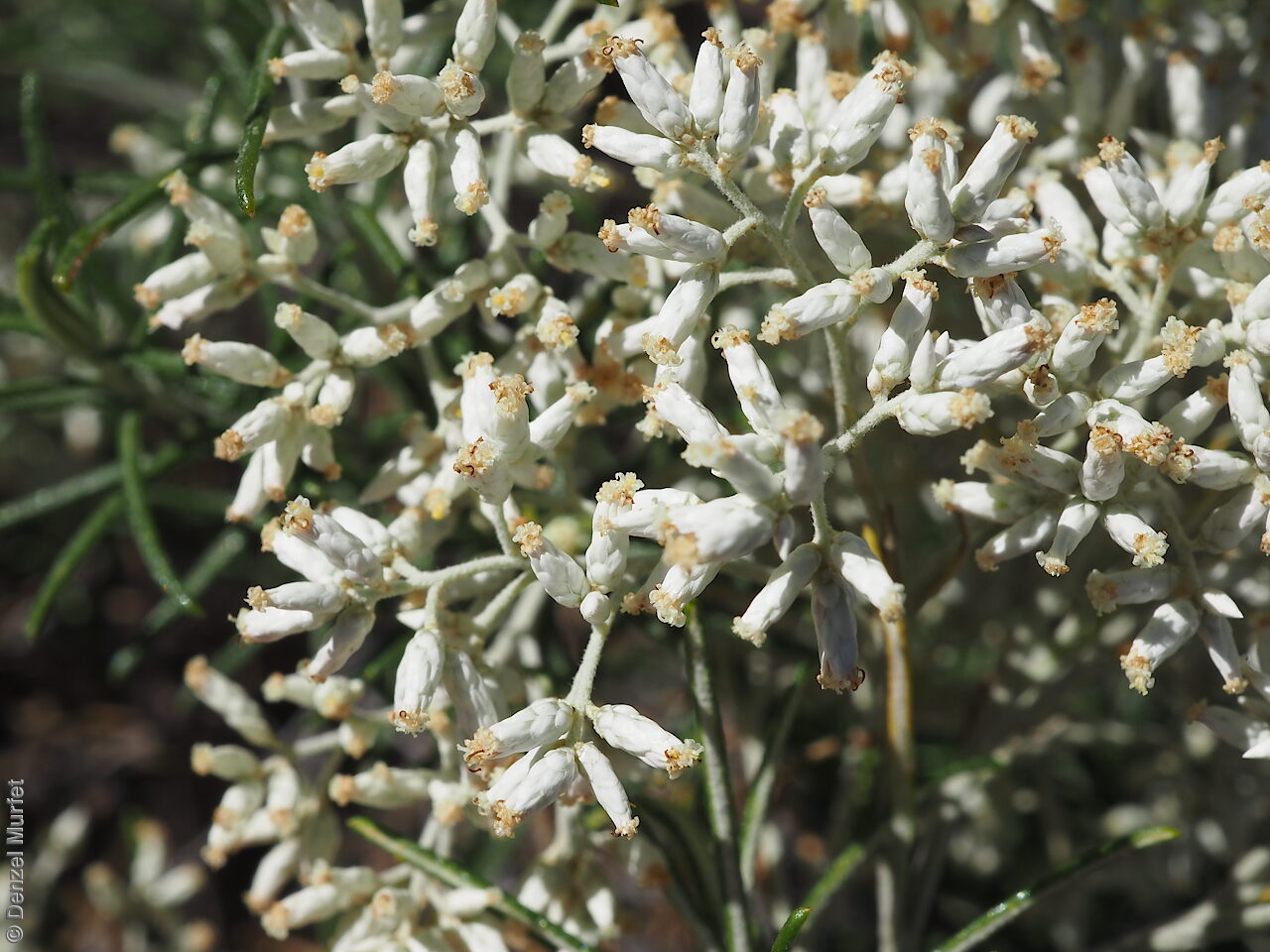
















Botanical art
Prior names
Cassinia laevis
Cassinia aculeata var. laevis
Common names
Smooth Cassinia
Curry Bush
Cough Bush
Etymology
Cassinia named after Alexandre-Henri Gabriel de Cassini (1782-1832), a French botanist who published extensively on the Compositae family. Laevis from Latin meaning smooth.
Distribution and status
Found in southern South Australia, with a disjunct population in the north-west corner, growing in scrub and woodland on stony and sandy soils. Also found in the Northern Territory and New South Wales. Native. Common in South Australia. Uncommon in the Northern Territory. Common in New South Wales.
Herbarium regions: North Western, Gairdner-Torrens, Flinders Ranges, Eastern, Eyre Peninsula, Northern Lofty, Murray, Southern Lofty, South Eastern
NRM regions: Adelaide and Mount Lofty Ranges, Alinytjara Wilurara, Eyre Peninsula, Northern and Yorke, South Australian Arid Lands, South Australian Murray-Darling Basin, South East
AVH map: SA distribution map (external link)
Plant description
Perennial shrub to 1.5 m high, with a curry-like scent, stems erect, densely branched with branchlets covered in creamy hairs at first, later brownish, pubescent and roughened at the leaf bases. Leaves spreading, narrowly linear, decurrent, obtuse to mucronulate, straight, to 35 mm long and 1 mm wide, upper surface glabrous, smooth or wrinkled, dark-green, lower surface with dense white hairs, forming a conspicuous line between the revolute margins. Inflorescence a loose spike with white- yellow flowers. Flowers most of the year. Fruits are light creamy-brown loose daisy-head. Seed embryo type is spatulate.
Seed collection and propagation
Collect heads that are matured, creamy-brown and contain brown seeds. Place the heads in a tray for one to two week to dry. Then rub the heads gently with your hands to dislodge the seeds. Use a sieve to separate any unwanted material. Viable seeds will be small and brown. Store the seeds with a desiccant such as dried silica beads or dry rice, in an air tight container in a cool and dry place. Seeds are non-dormant, viable seed should germinate readily.